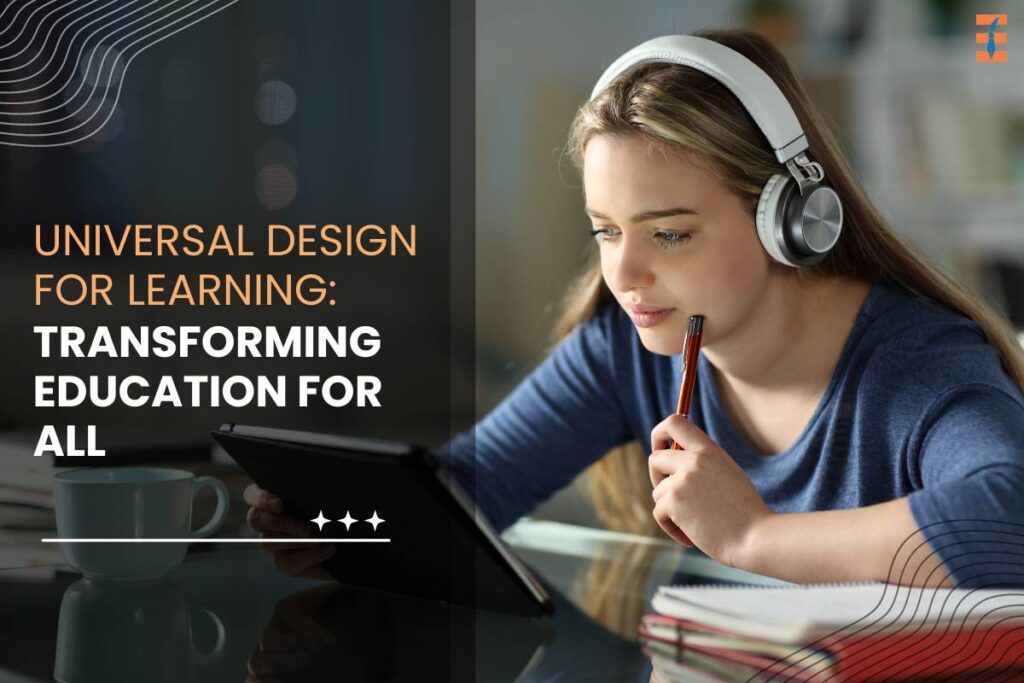In today’s diverse and rapidly evolving educational landscape, the concept of Universal Design for Learning (UDL) has emerged as a powerful framework for creating inclusive and effective learning environments. UDL aims to remove barriers to learning by providing multiple means of representation, engagement, and expression, thereby catering to the diverse needs and learning styles of all students. In this comprehensive article, we will explore the principles of Universal Design for Learning, its benefits, implementation strategies, and its transformative potential in education.
Understanding Universal Design for Learning
Universal Design for Learning is rooted in the principles of accessibility, equity, and flexibility. It recognizes that every student is unique, with varying strengths, preferences, and challenges. The UDL framework emphasizes the importance of designing curriculum, instruction, and assessment in a way that accommodates this diversity, ensuring that all students have equal opportunities to succeed.
At its core, UDL is guided by three main principles:
1. Multiple Means of Representation

Providing information and content in multiple formats and modalities to accommodate diverse learning styles and preferences. This may include text, audio, video, images, interactive simulations, and other multimedia resources.
2. Multiple Means of Engagement
Engaging students through varied and meaningful learning experiences that tap into their interests, motivations, and backgrounds. This may involve incorporating interactive activities, real-world applications, collaborative projects, and student choice into the curriculum.
3. Multiple Means of Expression
Allowing students to demonstrate their knowledge and understanding in various ways, taking into account their strengths, preferences, and communication styles. This may include written assignments, oral presentations, multimedia projects, artistic creations, and alternative assessments.
By providing multiple means of representation, engagement, and expression, UDL aims to maximize learning opportunities for all students, regardless of their abilities, backgrounds, or learning profiles.
Benefits of Universal Design for Learning
The adoption of Universal Design for Learning offers numerous benefits for students, educators, and educational institutions:
1. Increased Access and Equity
UDL ensures that all students have equitable access to learning opportunities, regardless of their individual needs or circumstances. By removing barriers to learning, UDL promotes inclusivity and diversity in the classroom.
2. Improved Learning Outcomes
UDL accommodates diverse learning styles and preferences, allowing students to engage with content in ways that are meaningful and relevant to them. This personalized approach can lead to higher levels of engagement, motivation, and academic achievement.
3. Enhanced Student Engagement
UDL promotes active learning experiences that are engaging, interactive, and relevant to students’ interests and experiences. By incorporating multimedia resources, real-world applications, and student choice, UDL can increase student engagement and participation in the learning process.
4. Support for Special Populations

UDL benefits students with diverse learning needs, including those with disabilities, English language learners, gifted students, and students from culturally and linguistically diverse backgrounds. By providing multiple means of representation, engagement, and expression, UDL ensures that all students receive the support and accommodations they need to succeed.
5. Flexibility for Educators
UDL provides educators with flexibility in designing and delivering instruction, allowing them to adapt their teaching methods to meet the needs of diverse learners. By incorporating UDL principles into their teaching practices, educators can create dynamic and inclusive learning environments that promote student success.
Implementing Universal Design for Learning
Implementing Universal Design for Learning involves a systematic approach to curriculum design, instruction, and assessment. Here are some key strategies for implementing UDL in the classroom:
1. Know Your Students
Take the time to get to know your students’ strengths, interests, preferences, and learning profiles. This information will help you design instruction that meets the diverse needs of your students.
2. Provide Multiple Means of Representation
Present information and content in multiple formats and modalities to accommodate diverse learning styles and preferences. This may include providing text alternatives for visual content, using multimedia resources, and offering scaffolded instruction.
3. Offer Multiple Means of Engagement
Engage students through varied and meaningful learning experiences that tap into their interests, motivations, and backgrounds. This may involve incorporating interactive activities, real-world applications, and collaborative projects into the curriculum.
4. Allow Multiple Means of Expression
Provide students with opportunities to demonstrate their knowledge and understanding in various ways, taking into account their strengths, preferences, and communication styles. This may include offering alternative assessments, providing choice in assignments, and allowing for flexible deadlines.
5. Promote Self-Regulation and Executive Functioning

Teach students strategies for setting goals, monitoring their progress, and reflecting on their learning. Encourage metacognitive skills such as planning, organization, time management, and self-assessment.
6. Foster a Supportive Learning Environment
Create a supportive and inclusive learning environment where all students feel valued, respected, and supported. Foster a sense of belonging and community, and encourage collaboration, peer support, and mutual respect among students.
The Transformative Potential of Universal Design for Learning
Universal Design for Learning has the potential to transform education by promoting inclusivity, equity, and excellence for all learners. By embracing the principles of UDL, educators can create dynamic and inclusive learning environments that accommodate the diverse needs and learning styles of all students. Through personalized instruction, engaging learning experiences, and flexible assessments, UDL can empower students to reach their full potential and become lifelong learners.
As educational institutions continue to embrace the principles of Universal Design for Learning, we can expect to see greater diversity, inclusivity, and accessibility in education. By removing barriers to learning and providing multiple pathways to success, UDL can help create a more equitable and inclusive society where all individuals have the opportunity to thrive and succeed.
Conclusion
Universal Design for Learning represents a powerful framework for transforming education and promoting equity and excellence for all learners. By embracing the principles of UDL and implementing evidence-based practices, educators can create dynamic and inclusive learning environments that meet the diverse needs of all students. As we strive to build a more inclusive and equitable society, UDL offers a roadmap for creating educational experiences that empower all individuals to succeed.

Exploring Universal Design for Learning: A Path to Inclusive Education
Universal Design for Learning (UDL) has emerged as a transformative approach in education, breaking down barriers and creating inclusive environments for diverse learners.










